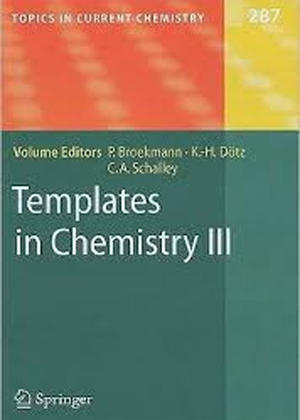119
Templates in Chemistry III
P. Broekmann, K.-H. Dötz, C. A. Schalley (eds.) – 2009
The first two volumes in this “Templates in Chemistry” series have focused on templates that control solution-phase reactions. Among the templates discussed in these two volumes were convex and concave templates that mediate the formation of (macro)cyclic molecules and mechanically bound molecules with their intriguing intertwined topology. Also, three-dimensional templates that are used to imprint polymers and that organize compounds in the solid state for predestined reactions have been included in the earlier volumes. In the present volume, we extend the template topology to surfaces that act as matrices for the controlled growth of two-dimensional arrays. Naturally, the typical methods for the characterization of surfaces such as scanning probe microscopy are prominently represented in this volume. Different lateral interactions such as coordinative bonds or hydrogen bonding play a major role in assembling the 2D networks on surfaces in addition to the interaction of the samples with the underlying substrates. Many phenomena that are also encountered in solution can be directly visualized on surfaces: Reversible self-assembly processes lead to the formation of large structures through multiple recognition of small building blocks and culminate in the engineering of crystals in two dimensions. Self-sorting processes drive the formation of highly ordered arrays through the geometric fit of the available components. Either the surface itself is the template, for example, when clusters grow on metal oxide films, or colloidal templates control the formation of macroporous networks on the substrate. This volume highlights a selection of actual complementary aspects of surface templates.
Templates in Chemistry III

